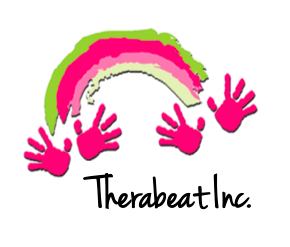Songwriting in music therapy is a therapeutic intervention designed for the client and therapist to create lyrics and music. Songwriting is used to target a wide variety of clinical diagnoses and goal areas. These common goals consist of increasing verbal communication, improving self-concept, validating experiences and emotions, externalizing thoughts, and developing cognitive skills. When planning a songwriting intervention, the therapist music takes into consideration the emotional and cognitive needs of the client. This results in the original goals of the intervention sometimes shifting to meet the present needs of the client.
When leading a songwriting intervention, the music therapist controls the content, structural components of the lyrics, and the melodic form, which contributes to the process. Types of songwriting consist of original compositions, Lyric substitution (piggy-back) lyric writing, fill-in-the-blank, guided, and improvisation. Lyric substitution (piggy-back) song writing consists of taking an existing song and the client adapts and rewrites their own lyrics. Fill-in-the-blank songwriting consists of the client completing lyrics with preexisting song structure. Guided songwriting consists of the therapist providing structure and suggestions collaboratively with the client during the songwriting process. Lastly, improvisation songwriting consists of the client engaging in spontaneous music making and/or lyric writing.
A case study example of song writing targeting the reduction of stress is found in the article “The Feasibility of Songwriting as Stress Management for Parents of Hospitalized Children.” In this study, patients are parents of children who are hospitalized for two or more weeks and are dealing with anxiety and stress. Short term prognoses consist of reduction of stress levels and long-term prognoses varied depending on the severity of reason for children’s hospitalization. These needs were assessed through self-report from patients/caregivers and then were also assessed through referrals from health care providers. There were three phases as part of the music therapy session that were used to target reducing anxiety. Live music for rapport building, guided music meditation and then song writing. The interventions specifically rely on counseling techniques such as paraphrasing, redirection, and body language to build rapport and allow for exploring of clients’ ideas. For the song writing intervention the therapist used lyric substitution and original song writing. The projected outcomes consist of decreased stress and anxiety levels of parents with children who are staying in the hospital longer than two weeks. The song writing intervention also allowed for bonding and processing of emotions for the parents. The interventions were personalized based on parent comfort and the current anxiety levels of the parents which allows for therapeutic discretion and manipulation of the session. This discretion allows for the generalization of this intervention to other clients with similar needs.
Overall, music therapy provides the space for parents to reduce their stress and anxiety levels using song writing, by providing the parents with autonomy through discussion to promote positive coping skills.
-Rebecca Smith, Music Therapy Intern
References:
Marcovitz, J., Zhang, Q., Jang, H., Adelman, S., Pincus, B., Bauman, J., & Mullur, R. (2024). The Feasibility of Songwriting as Stress Management for Parents of Hospitalized Children. Music Therapy Perspectives, 42(2), 123–128. https://doi.org/10.1093/mtp/miae010
Aasgaard, T., & Blichfeldt Ærø, S. C. (2015). Songwriting Techniques in Music Therapy Practice (J. Edwards, Ed.; Vol. 1). Oxford University Press. https://doi.org/10.1093/oxfordhb/9780199639755.013.20
Music Teacher, ‟Ioan Sima” Art High School, Zalău, Romania. Email: ellie.pastor94@gmail.com., Pastor, E., Heath, B., & Music Therapist, Singer, Songwriter, Musician, Associate Lecturer, University of West England. Email: bob.heath.therapy@gmail.com. (2022). A Case Study on Songwriting in Music Therapy. Studia Universitatis Babeş-Bolyai Musica, 67(1), 37–48. ttps://doi.org/10.24193/subbmusica.2022.1.03

